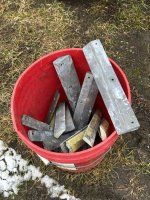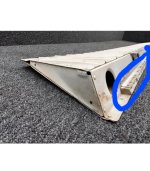- Location
- Blaster land, Okanagan BC
Has anyone ever used aircraft ballast for casting bullets, what is it generally composed of? Had some given to me by a friend, it’s got inspection stamps and part numbers stamped into it.
Searching part numbers online doesn’t bring anything up, anything I find on cast boolits says it could be pure lead, lead/antimony or tungsten. Have a mix of soft and hard lead by the looks of it but I haven’t tried to test hardness yet.
Searching part numbers online doesn’t bring anything up, anything I find on cast boolits says it could be pure lead, lead/antimony or tungsten. Have a mix of soft and hard lead by the looks of it but I haven’t tried to test hardness yet.








































































